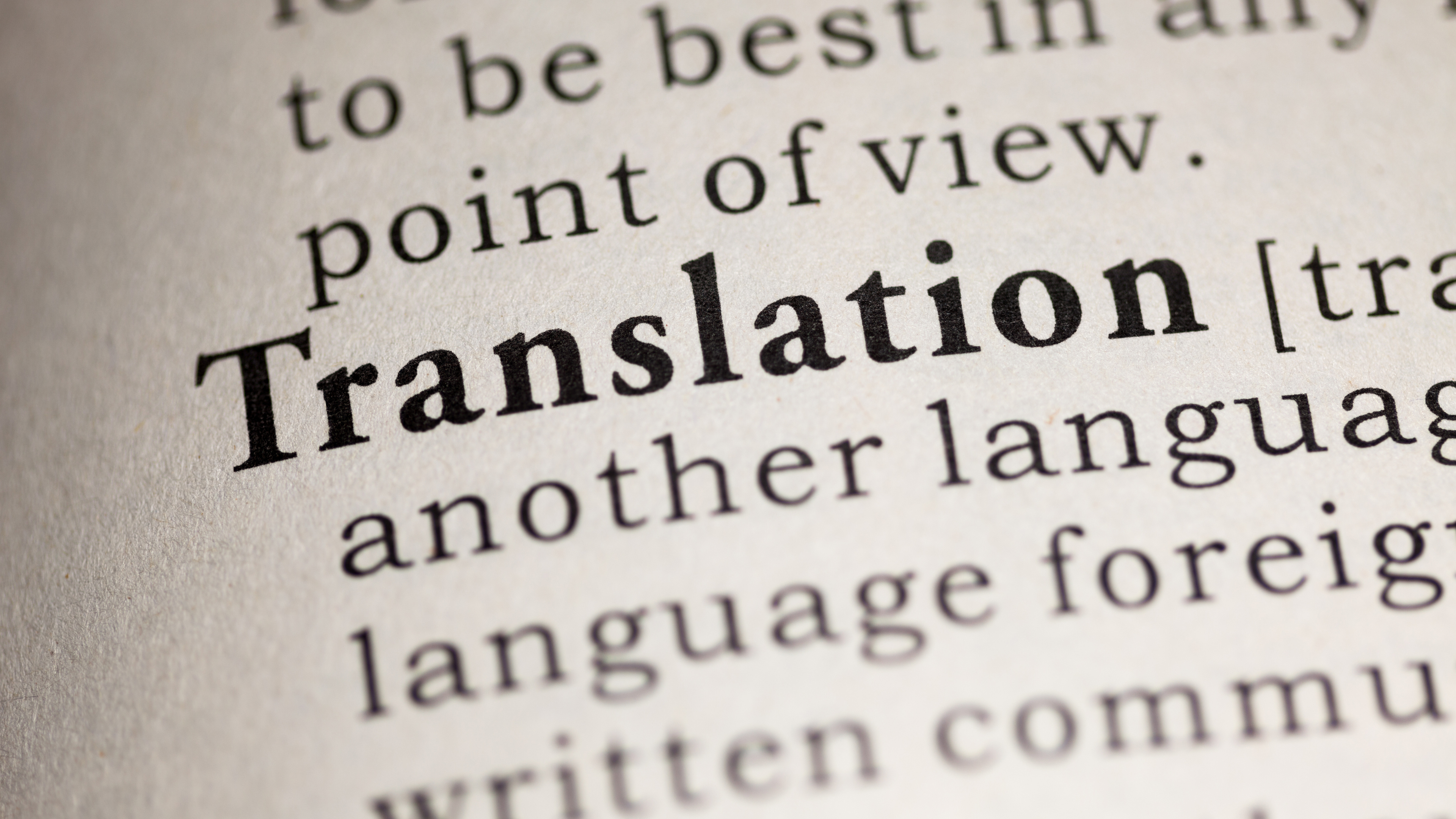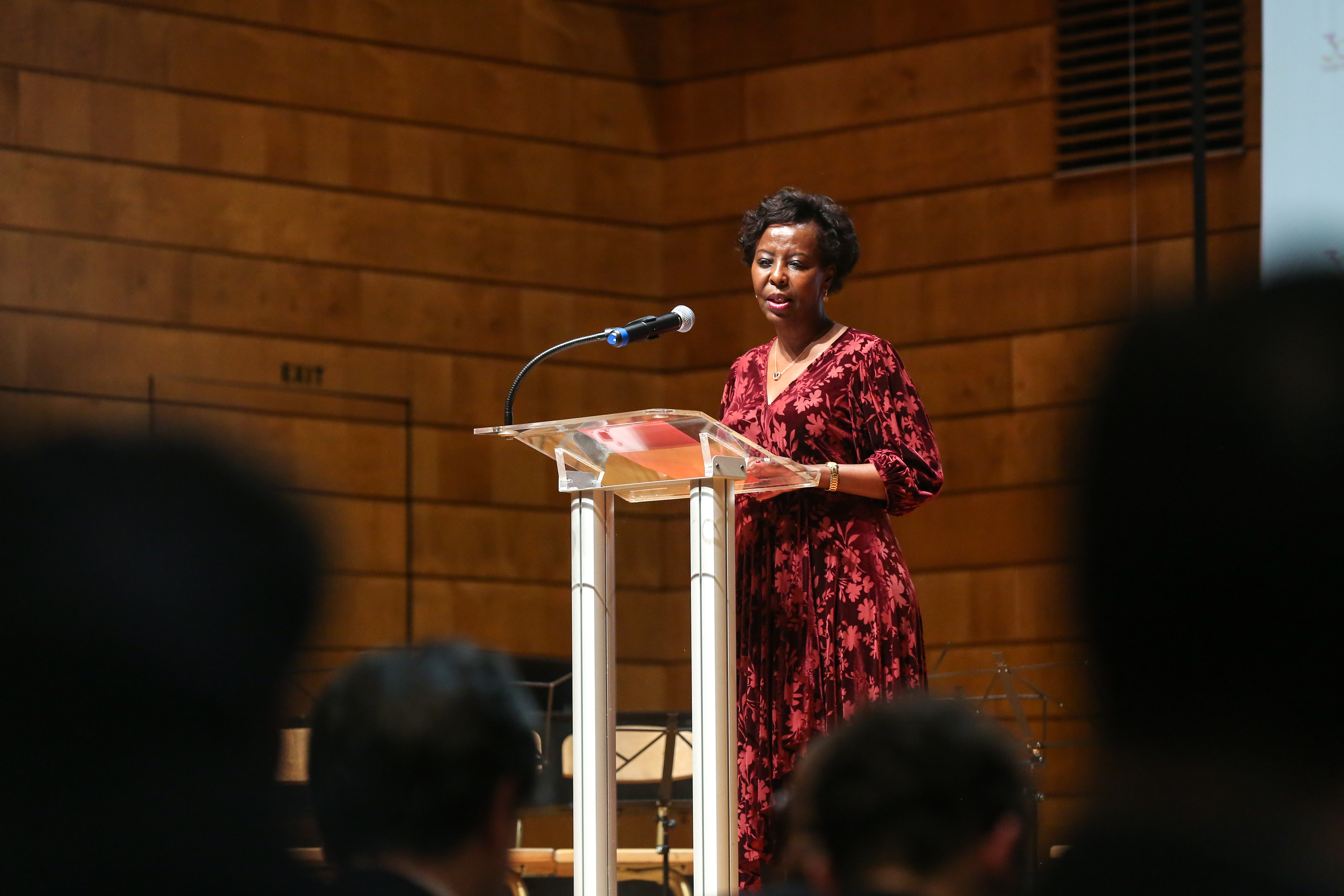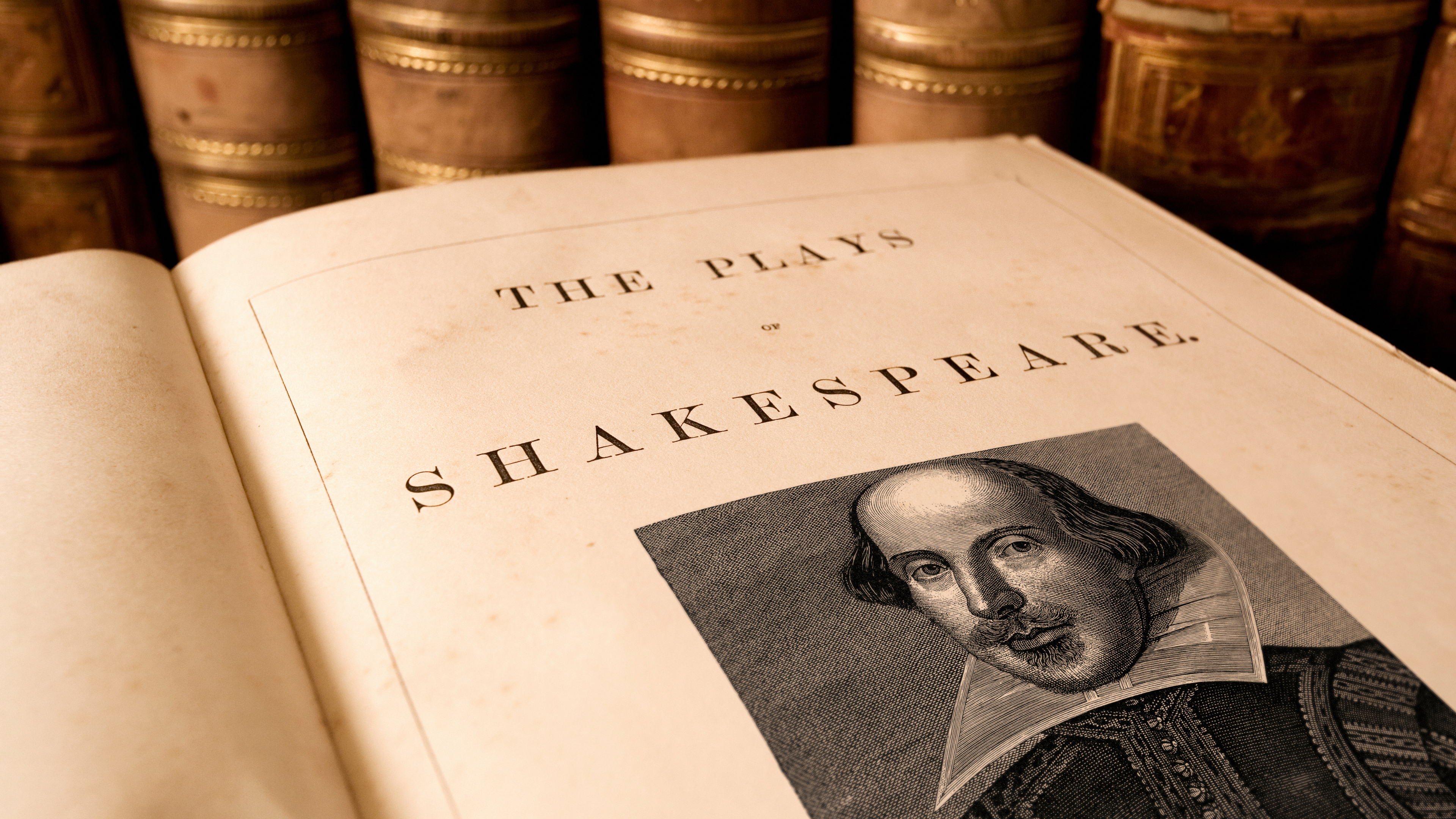Already a user?Log inTechnical Support
International Translation Day – Celebrating the Discreet Art Behind Global Communication
28 September 2023
International Translation Day is celebrated by language enthusiasts and professionals the world over on 30th September each year – a significant date chosen by the International Federation of Translators (FIT) in 1991 as it is St Jerome’s feast day, the patron saint of translators. St Jerome is, of course, most renowned for his Vulgate, or Latin translation of the Bible commissioned in 382 A.D., a work which, if you’re familiar with the history, you’ll know highlights the true magnitude of the impact translation has always had on the world. But 2017 marked a milestone in acknowledging the weight and importance of translation when the UN officially adopted International Translation Day, “recognising the role of professional translation in connecting nations, and fostering peace, understanding and development.”
“Translation is not a matter of words only: it is a matter of making intelligible a whole culture.”
– Anthony Burgess
Each year, FIT chooses a unifying theme for International Translation Day, this year’s being “Translation unveils the many faces of humanity”. The aim of this theme is to spotlight the role translation plays in linking cultures and bringing all of us together in our human experience. Translation is a vital discipline that facilitates cross-cultural communication, enabling the exchange of ideas, knowledge and information between people who speak different languages, thus ensuring the right to speak one’s native language remains intact. This is something we at Altissia take very seriously; in fact, our team works to translate Altissia’s services into a whopping 36 languages, so that as many users as possible can navigate their way through our content in their mother tongue.
Indeed, linguistic rights are human rights – officially so since 1996 – and this idea has aways struck a chord with me, as here at Altissia, our core values are centred around the belief that language empowers people; that all of our languages and cultures are to be celebrated and that in learning other languages, we are opening our minds and hearts to one another.
“Writers make national literature, while translators make universal literature.”
– José Saramago
Translation plays a pivotal role in literature, diplomacy, medicine, science, business, and countless other fields, making the world more connected and accessible. Indeed, it is a 50-billion-dollar industry, and yet, translation is a hidden art, with translators often the invisible voices of these international domains. To give an example I’m sure we can all relate to, how many of us have read a translation of a classic novel, and, when asked what we were reading, named the classic itself, rather than saying “a wonderful translation by [translator] of [said novel]”? You might even have discovered a favourite author, thanks to translation. Although steps have been taken in recent years to give translators the recognition they deserve – since 2015, the International Booker Prize, a literary accolade awarded annually in the UK, has been attributed to both the author and the book’s English translator, with the prize money shared equally – this attitude remains the norm in most spheres; only recently, the British Museum found itself in hot water when it failed to credit or remunerate Chinese-Canadian translator Yilin Wang for her translations of 19th century Chinese feminist Qiu Jin’s poetry, blaming this oversight on “unintentional human error”. To me, this is a reflection of the common stance towards the often overlooked, discreet art that is translation.
“Translation is that which transforms everything so that nothing changes.”
― Günter Grass
This inherent discretion is also very much the case at Altissia, where our translation team manages a hidden taskforce of over 200 language professionals to make sure that all of our clients, learners and prospects are communicated with naturally in their respective languages.
Yes, translation at Altissia is quite a big deal! On the surface, you might not expect it, but all of our language courses and assessments are, of course, available on a learning platform, and that platform can be switched into any one of our 36 interface languages, which have been meticulously translated and tested by us personally in our own languages, and by our pool of freelance translators. Couple the platform with all of our communication and marketing material (this blog included!), our emails and motivational content sent out to users, demonstration videos, user guides… You name it, it has been translated! And the same applies to our clients’ personalised projects, be they institutions, government bodies or private companies – everything they need that involves text in any way has been edited and translated by us. In fact, at the beginning of August ’23, we hit our milestone 10,000th translation task since we started using our current project management tool in 2021!
“I just enjoy translating, it’s like opening one’s mouth and hearing someone else’s voice emerge.”
― Iris Murdoch
My first taste of translating came at the tender age of 13, when I was tasked with tackling passages of Virgil, Suetonius and Pliny the Younger. Far from joining in with my classmates’ groans of dismay each Thursday afternoon, I took to working out the passages of Latin with gusto, trying to crack the code and unveil what was being said. So great was my enjoyment that I was one of only five pupils to pursue Latin until the end of secondary school, although the 3-hour Latin prose and verse translation exam was certainly one of my more challenging GCSEs… However, it didn’t put me off, and my love of languages carried me all the way through my formative years.
It would be some 8 years later, fresh out of university, that I’d land my first paid translation job, and a rather unusual one at that – translating newspaper articles from French into English for a Turkish newspaper’s Brussels correspondent.
It’s clear languages fascinated me from a young age. For as long as I can remember, I’ve had an insatiable habit of reading every translation on my shampoo bottles and other toiletries, trying to work out the word for, say, “glossy” in all the different languages, and feeling satisfied even when I recognise the easy words.
Indeed, translations are all around us, all the time. I’m sure we’ve all experienced watching foreign-language films with the subtitles on in our native language, and some of us might recommend this practice to our language students or remember a language teacher suggesting we try this. Subtitles are invaluable when we’re learning a language, and, in my experience, they are a great way to help assimilate vocabulary.
Of course, subtitling a different language is translation, and this is yet another facet of our work at Altissia – one which learners on the platform can benefit from as a study aid; subtitles and translations are available in certain sections, making them far more accessible to beginners. In fact, I remember working on the subtitles of eighteen of our more unusual European languages for a series of vocabulary lessons, and this project sticks in my mind as it was just such an interesting undertaking for me. I was tasked with carrying out their final English proofreading and found myself treating them as I would a bilingual proofreading, checking the sources, marvelling at the words and expressions. In proofreading these beginner lessons, I felt like I’d learnt how to count in Croatian, dine out in Danish and introduce family members in Finnish, or, at the very least, I could recognise vocabulary I’d never have known without this translation project.
“Without translation I would be limited to the borders of my own country. The translator is my most important ally. He introduces me to the world.”
― Italo Calvino
I won’t delve into the murky waters of machine translation in this article, for fear of never ending it! But I will say that it’s the people behind the translations, with their understanding of cultures and their lived human experience, that make them such a powerful tool. Translation can have massive implications on the world, and, when it’s dealt with incorrectly, these implications can be catastrophic (think the mistranslation of the Japanese word mokusatsu, infamously leading to the disastrous bombing of Hiroshima). Without a human perspective, the context only a person can infer, I worry the margin for error could be far greater. So, as International Translation Day approaches, let us take a moment to recognise the tireless efforts of language professionals worldwide who bridge gaps and build connections, fostering a more inclusive and understanding global community. Whether it be literature, diplomacy, business, or everyday conversation, translation remains an indispensable force that unites humanity, transcending borders and languages.
If you’re a language aficionado, keep your eyes peeled for International Translation Day events near you – I know English PEN held some very interesting literary translation workshops in London last year. You never know, they might just open up a whole new career path for you. And if you’re not already learning a foreign language, why not take this as your sign to start! Have a go and catch a glimpse of what the world is like through a translator’s eyes.
Anna would, of course, like to thank the translators for their wonderful work in translating this article: Isabelle Cluzel & Lyane Fleuriault (French), Mariella Ferreccio & Antonio Fajardo (Spanish), Ina Brachmann & Sabine Schlottky (German), Claudia Kamiyama Kiohara & Kelly Silva (Brazilian Portuguese) and Veronica B & Valentina Giuffrida (Italian).
References:
United Nations, International Translation Day 30 September. Available at https://www.un.org/en/observances/international-translation-day (accessed 04/07/23)
International Federation of Translators, International Translation Day “Translation unveils the many faces of humanity” – Celebrating ITD in 2023, FIT Blog, 2023. Available at https://en.fit-ift.org/international-translation-day/ (accessed 03/08/23)
Walter John Burghardt, St. Jerome Christian scholar, Encyclopaedia Brittanica, 1998, updated 2023. Available at https://www.britannica.com/biography/Saint-Jerome (accessed 04/07/23)
Anthony Burgess, Is translation possible? pp.3-7 Translation: The Journal of Literary Translation, New York, 1984., as cited in Marin P. Allen, Robert E. Johnson, Evelyn Z. McClave, and Wilma Alvarado-Little’s Language, Interpretation, and Translation: A Clarification and Reference Checklist in Service of Health Literacy and Cultural Respect, National Academy of Medicine, 2020. Available at https://nam.edu/language-interpretation-and-translation-a-clarification-and-reference-checklist-in-service-of-health-literacy-and-cultural-respect/ (accessed 11/08/23)
UNESCO, World Conference on Linguistic Rights: Barcelona Declaration, UNESCO. Executive Board, 150th Session, Paris, 1996. Available at https://unesdoc.unesco.org/ark:/48223/pf0000104267 (accessed 11/08/23)
José Saramago as cited in Donna Mackay-Smith, The best International Booker-nominated translated fiction, as chosen by celebrities, The Booker Library, Features, 2023. Available at https://thebookerprizes.com/the-booker-library/features/best-translated-fiction-as-loved-by-celebrities# (accessed 18/08/23)
The UNESCO Courier, Translation: From one world to another, April-June edition, 2022. Available at https://unesdoc.unesco.org/ark:/48223/pf0000381067_eng/PDF/381067eng.pdf.multi (accessed 04/07/23)
Booker Prizes, The International Booker Prize and its history. Available at https://thebookerprizes.com/international-booker-prize/the-international-booker-prize-and-its-history (accessed 18/08/23)
Geraldine Kendall Adams, British Museum apologises to translator after copyright row, Museums Association Museums Journal, 2023. Available at https://www.museumsassociation.org/museums-journal/news/2023/06/british-museum-apologises-to-translator-after-copyright-row/# (accessed 03/08/23)
Günter Grass, as cited in Esther R. Mayer’s Yosse Ben Yosse’s Avodah Liturgy: A Political Reading, Concordia University, Montreal, 2018. Available at https://core.ac.uk/download/pdf/211521134.pdf (accessed 21/08/23)
Iris Murdoch, Under the Net, p. 18, Penguin Books, 1977
Inga Dagilienė, Translation as a Learning Method in English Language Teaching, Kalbų Studijos Studies About Languages No. 21, 2012. Available at https://kalbos.ktu.lt/index.php/KStud/article/view/1469 (accessed 03/07/23)
Frank MacShane, The Fantasy World of Italo Calvino, New York Times Magazine, p.23, July 10, 1983. Available at https://www.nytimes.com/1983/07/10/magazine/the-fantasy-world-of-italo-calvino.html (accessed 18/08/23)
American Translator’s Association, ATA's Position Paper on Machine Translation: A Clear Approach to a Complex Topic, 2018. Available at https://www.atanet.org/client-assistance/ata-position-paper-machine-translation-a-clear-approach-to-a-complex-topic/ (accessed 22/06/23)
Mokusatsu: One Word, Two Lessons, pp. 95 – 100, anonymised declassified document. Available at: https://www.nsa.gov/portals/75/documents/news-features/declassified-documents/tech-journals/mokusatsu.pdf (accessed 11/08/23)



